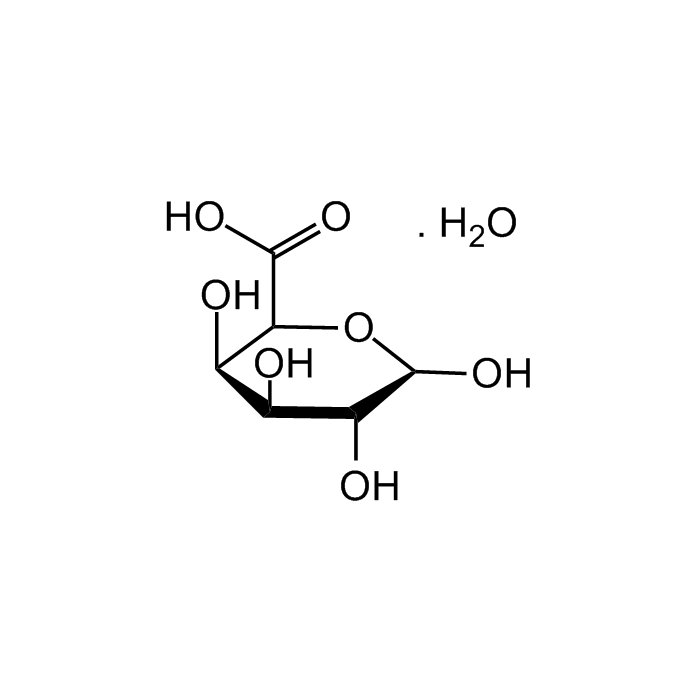Cookie Policy: This site uses cookies to improve your experience. You can find out more about our use of cookies in our Privacy Policy. By continuing to browse this site you agree to our use of cookies.
Chemodex
D-(+)-Galacturonic acid monohydrate

| Product Details | |
|---|---|
| Synonyms | D-(+)-GalA; GalA |
| Product Type | Chemical |
| Properties | |
| Formula |
C6H10O7 . H2O |
| MW | 212.15 |
| CAS | 91510-62-2 |
| Source/Host Chemicals | Synthetic. |
| Purity Chemicals | ≥98% (Titration) |
| Appearance | White crystalline powder. |
| Solubility | Soluble in water. |
| Identity | Determined by 1H-NMR. |
| Declaration | Manufactured by Chemodex. |
| Other Product Data |
Click here for Original Manufacturer Product Datasheet |
| InChi Key | BGHPCEJXDOGRGW-ZHASUDBCSA-N |
| Smiles | O.OC1OC(C(O)[C@H](O)C1O)C(O)=O |
| Shipping and Handling | |
| Shipping | AMBIENT |
| Short Term Storage | +4°C |
| Long Term Storage | +4°C |
| Handling Advice | Protect from light and moisture. |
| Use/Stability | Stable for at least 2 years after receipt when stored at +4°C. |
| Documents | |
| MSDS |
 Download PDF Download PDF |
| Product Specification Sheet | |
| Datasheet |
 Download PDF Download PDF |
D-(+)-Galacturonic acid (GalA) is an oxidized form of the monosaccharide D-galactose, a component of the disaccharide lactose and the major component of pectin. This cyclic form can take two configurations, α-D-galacturonic acid or the β-epimer.
GalA is the primary building block and structure-giving element of pectin and other biopolymers found throughout the plant kingdom. Pectin is found in the cell walls of all plant tissues and functions as an intercellular connecting material. It is especially abundant (≈30 wt%) in citrus rinds; but it is also commercially sourced from apples, spinach, sugarbeets, and other fruits and vegetables. Pectins main use is as a gelling or filling agent in foods such as jellies, jams, desserts, and candies and as a stabilizer in juices and milk-based drinks.
This GalA product is highly purified form Pectine. It is used in the synthesis of N-(D-galacturonoyl) amino acids and dipeptides. It can also be used as a reference compound for the quantification of the analyte. Potential applications are in the fermentative production of ethanol.
(1) H.R. Nanji; Biochem. J. 27, 1163 (1933) | (2) H. Masamune, et al.; Tohoku J. Exp. Med. 65, 367 (1957) | (3) C.W. Nagel & S. Hasegawa; Anal. Biochem. 21, 411 (1967) | (4) C. Vogel, et al.; Liebigs Annal. 1997, 737 (1997) | (5) C.-W. Cho, et al.; Carbohyd. Polym. 54, 21 (2003) | (6) E. Frirdich, et al.; J. Biol. Chem. 280, 27604 (2005) | (7) P. Richard & S. Hilditch; Appl. Microbiol. Biotech. 82, 597 (2009) | (8) A. Urbisch, et al.; J. Agric. Food Chem. 66, 11407 (2018) | (9) G. Chen, et al.; Industr. Crops Prod. 130, 273 (2019) | (10) Y.-Y. Wu, et al.; Ann. Palliat. Med. 10, 538 (2021)





